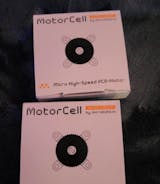So far I have only opened and inspected your products as I am waiting for the robot to be available to begin MicroBots projects
Very interesting devices. I have been using them for experiments in highly space-constrained sensor settings.
It does what it promises. Very small , good to use in applications where small size matters.Very important that it also has ready to go libraries and examples!



